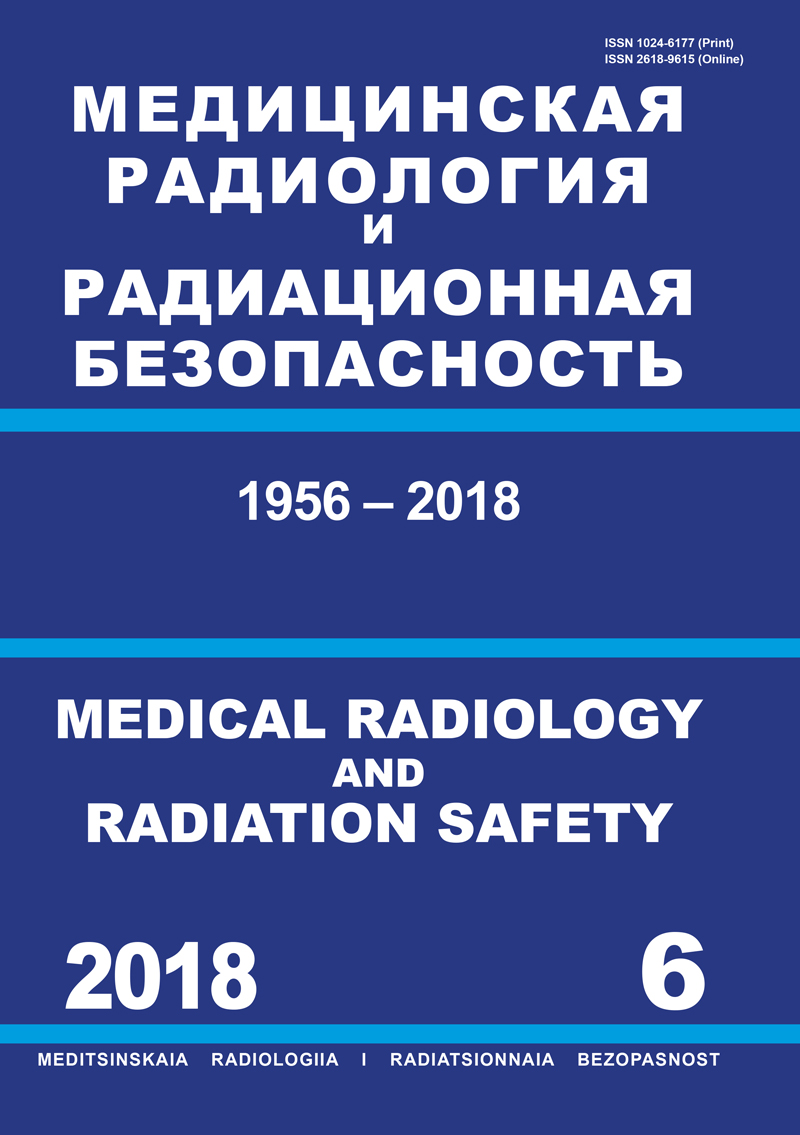Russian Federation
Russian Federation
Russian Federation
Russian Federation
Russian Federation
GRNTI 76.03 Медико-биологические дисциплины
GRNTI 76.33 Гигиена и эпидемиология
OKSO 14.04.02 Ядерные физика и технологии
OKSO 31.06.2001 Клиническая медицина
OKSO 31.08.08 Радиология
OKSO 32.08.12 Эпидемиология
BBK 51 Социальная гигиена и организация здравоохранения. Гигиена. Эпидемиология
BBK 534 Общая диагностика
TBK 5708 Гигиена и санитария. Эпидемиология. Медицинская экология
TBK 5712 Медицинская биология. Гистология
TBK 5734 Медицинская радиология и рентгенология
TBK 6212 Радиоактивные элементы и изотопы. Радиохимия
To develop a simple methodological apparatus for constructing typical scenarios of accidents and estimate of emissions of radioactive substances from nuclear power plants with VVER reactors in the planning and implementation of protective measures for the population.Material and methods_ To build the model of release of radionuclides into the environment in case of an accident used literary experimental data of outputs of the radioactive substances from the fuel when it is heating and melting, the destruction of the fuel rod cladding, the use of technical means retention of radioactive substances in the containment of the reactor and their behaviour in the containment (sedimentation, sorption, etc.).Results_ Mathematical apparatus has been developed to quantify the magnitude of emissions of radioactive substances at nuclear power plants with VVER reactors depending on the time for dose-forming radionuclides in the instantaneous rupture of cooling pipelines in the presence of additional failure of NPP safety systems. The amount of emission of each deterministic of an accident correspond to the level 4 to 7 of the INES scale. Radionuclide release into the environment was calculated in the following physical and chemical processes_ heating and melting of fuel, depressurization of fuel rod claddings, peculiarities of the behavior of radionuclides in the containment shell (deposition, etc.) and operation of technical means to ensure radiation safety, structural leakages of the buildings. As an example, the assessment of the release of radionuclides into the environment depending on the time for level 5 of the INES accident scale is given. Conclusion_ Methodical apparatus can be used in the construction of typical scenarios for the development of basis accidents and assessment of radioactive emissions at nuclear power plants with VVER reactors in the planning and implementation of protective measures for the population and emergency exercises and training_
radiation accidents, radionuclides, VVER reactors, scenarios, nuclear fuel element, temperature, melting, emission
1. Rasmussen NC. Reactor Safety Study. An Assessment of Accident Risks in US Commercial NPP. WASH-1400, (NUREG 75/014). US Regulatory Commission: October 1975. 142 p.
2. Vitol SA. Yield of radioactive materials from the melt of the core in a severe accident of the nuclear power plant. - SPb.: Autoref. PhD. 2007. 23 p. (Russian.)
3. International nuclear event scale (INES), User’s Guide (IAEA-INES-2001). Vienna: IAEA. 2001. 235 pp.
4. Vasiliev Yu, Zhdanov V, Kolodeshnikov A, et al. Studies of the processes that accompany severe accidents of the nuclear power reactors. Research report IAE, State. Inv. № 0207RK911. 2006. 92 p. (Russian.)
5. Filippov A, Drobyshevsky N, Kiselev A, et al. Socrates/hefest: model of interaction of a melt of the active zone of VVER designs the reactor in a severe accident. Proc. Acad. Sci., series energy. 2010;(3):4-24. (Russian.)
6. Bukrinskiy A. Deterministic regulation and probabilistic of orientation. Nuclear and Radiation Safety. 2013;1(67):3-6. (Russian.)
7. Soffer L, Burson SB, Ferrell CM, et al. Accident Source Terms for Lischt-Water Nuclear Power Plants NUREG-1465 Division of Systems Technology Office of Nuclear Regulatory Research U.S. Nuclear Regulatory Commission. 1995. 30 p.





